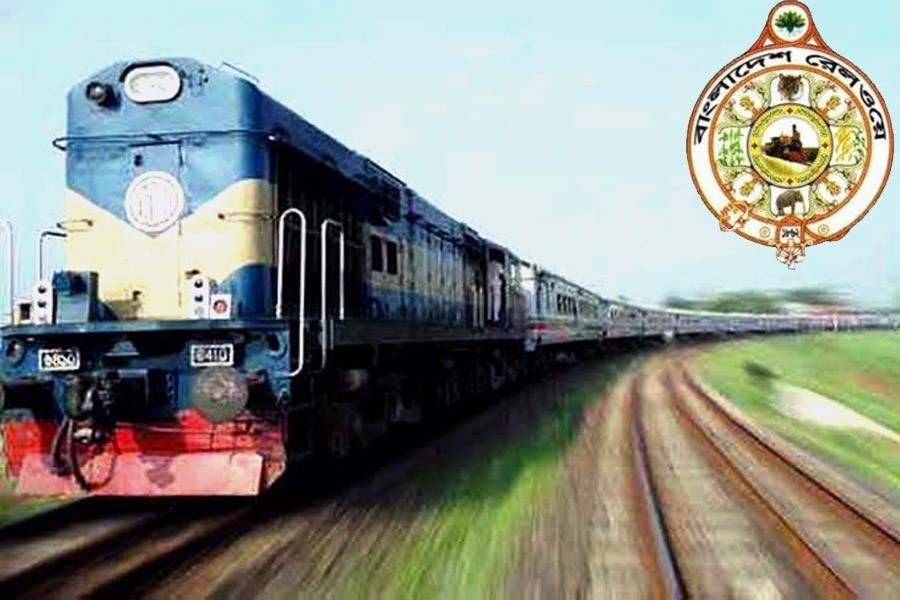In a bid to boost regional trade, the government is emphasising railway communication infrastructure by taking up a long-term project to upgrade all rail lines in Bangladesh to dual gauge, bdnews24.com reports.
As part of the plan, the existing meter gauge line in the country's south-eastern regions will be overhauled first. For this, the railway line from Dhaka to Dohazari in Cox's Bazar will be converted into dual gauge to accommodate both broad and meter gauge trains.
The line will also create a direct link between Dhaka and the deep seaport in Cox's Bazar's Matarbari.
After that, initiatives are being taken to increase connectivity and trade with countries in the region, including Myanmar, India, China, Thailand, Malaysia and Singapore, through Ghumdhum via Ramu.
In the meantime, a feasibility study for the implementation of the Dhaka-Chattogram-Cox's Bazar railway project is being carried out at a cost of Tk 2.12 billion, with financial assistance from the Asian Development Bank or ADB.
The project, which started in 2015, was scheduled to be completed this year. But due to the ongoing Covid-19 pandemic, a proposal has been sent to the Planning Commission to finish it next year, railway ministry officials said.
Addressing the project, Railway Minister Nurul Islam Sujan said, “We'll take up an umbrella project with four to five initiatives. As there's now a single line of meter gauge from Chattogram to Dohazari, a project will be undertaken to turn it into dual line and broad gauge."
"The 135-km railway line from Laksham to Chattogram is currently in meter gauge. A separate project will be pursued to turn it into broad and dual gauge. There will be a package from Tongi to Akhaura and another from Tongi to Bhairab Bridge. In this way, the entire railway line from Dhaka to Cox's Bazar will be converted to dual and broad gauge.”
"Neighbouring Myanmar, India, China, Thailand, Malaysia, Singapore and many more countries will be connected to it and discussions are ongoing to increase greater regional connectivity and trade. We'll implement these projects in a planned manner as part of our own preparations to build internal infrastructure with trade in mind.”
Work is already underway to construct a dual gauge over the Jamuna River and a broad gauge over the Padma, according to Sujan. "Basically, we're converting all our railways to broad gauge.”
On Jun 15, a virtual discussion was held on the project's feasibility study. According to the summary of the meeting, a total of 12 railway bridges will have to be constructed from Tongi to Dohazari under the project.
These railway bridges will be constructed over Tongi canal, Balu, Shitalakhya, Arial Khan, Old Brahmaputra, Meghna, Chhoto Feni, Muhuri, Feni, Karnaphuli, Matamuhuri and Old Matamuhuri rivers.
Under the initiative, rail tracks will be laid at the proposed power plants at Maheshkhali and Matarbari. It will also facilitate the movement of cars and wagons and have fuel supply and rolling stock depots as well as several offices for railway services.
An official at the railway ministry said the project to establish direct rail links between Dhaka and Matarbari is likely to cost around Tk 700 billion.
Addressing the matter, SM Salimullah Bahar, chief planning officer of Bangladesh Railway, said: “The figure is based on a preliminary estimate of the expenditures.
However, nothing has been finalised yet. Negotiations are underway with the Asian Development Bank for financing. Then, the final cost will be known."
"In fact, our target is to convert all the railway lines across the country to broad gauge. Once this project is implemented, the meter gauge will remain on Dhaka-Mymensingh, Dhaka-Jamalpur and Dhaka-Sylhet rail lines. If the finances are available, the ministry aims to convert these railways to broad gauge between 2035 and 2040.”
The route from Dhaka to Cox's Bazar via Tongi, Bhairab Bazar and Cox's Bazar will span around 470 km. However, if a direct line from Dhaka's Kamalapur to the south-facing Cumilla cord line is established, it would be possible to reduce the distance by 94 km and save about two hours of travel time.
In the past, Britain had a vision of developing railways in Bengal centred on Assam and Kolkata, according to BUET's Prof Shamsul Haque, a communication specialist.
He said after independence, the capital-based Dhaka-Chattogram line would become a commercial corridor. “Making it economically profitable and reliable is a great way to transport passengers and goods faster. With that in mind, the cord line in Cumilla was proposed in the 80s.”
“Of all the projects currently underway in the country, (this project) would have been the most promising. But for some unknown reason, it seems that this project is not being pursued on a priority basis.”


